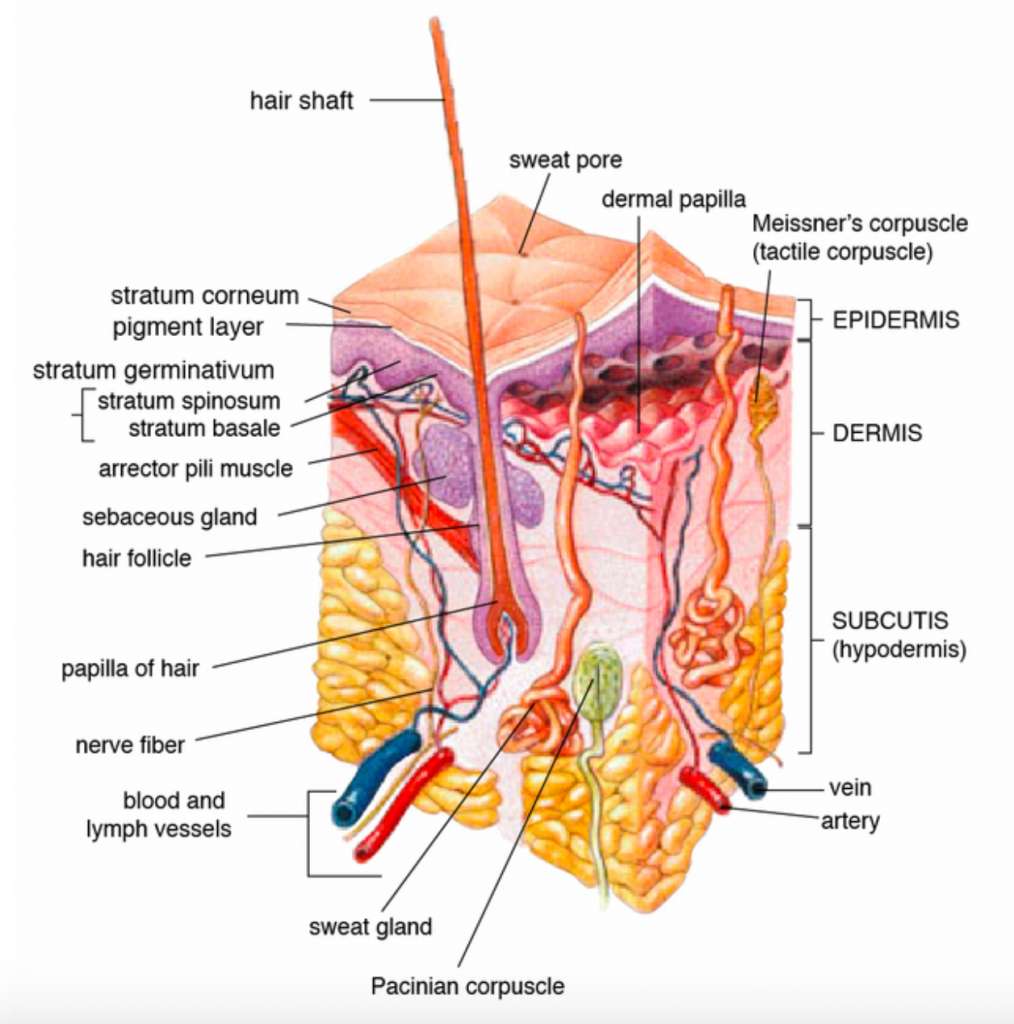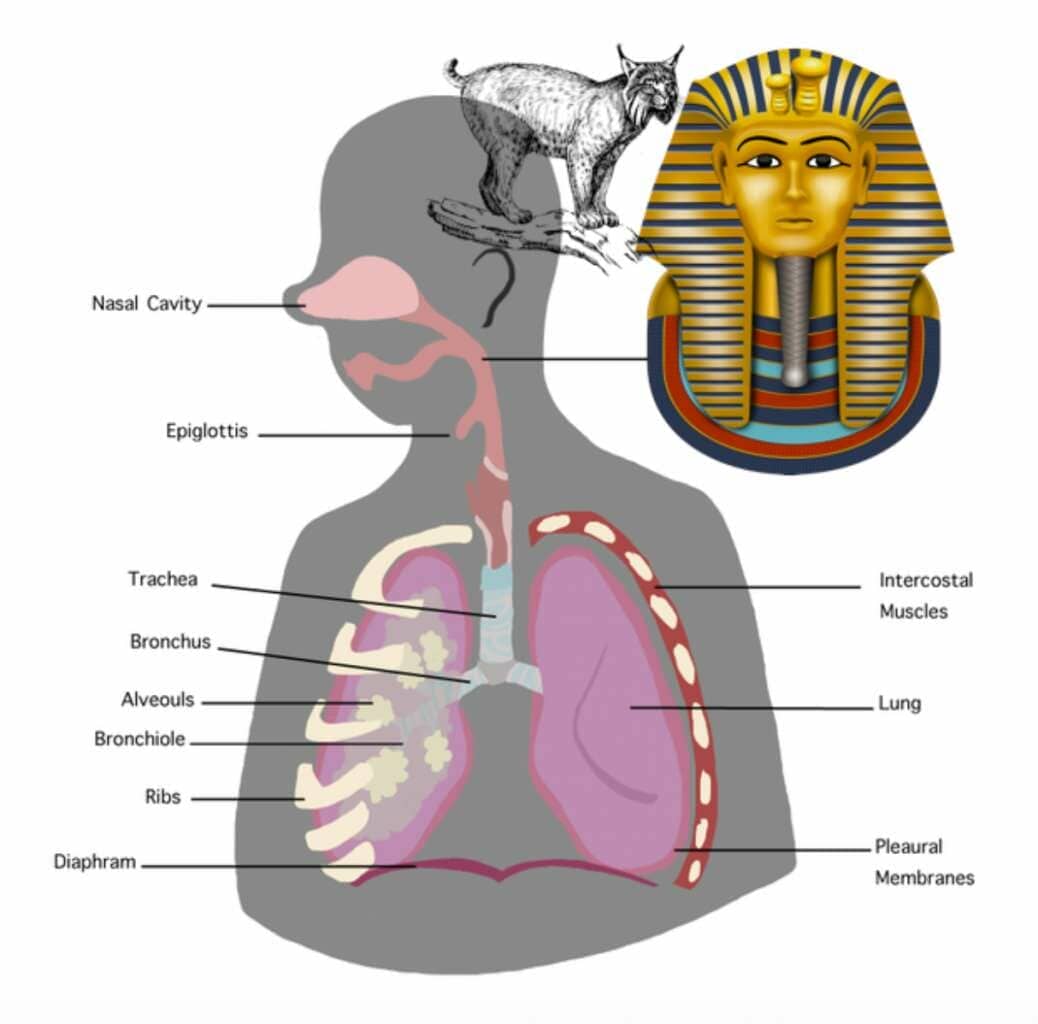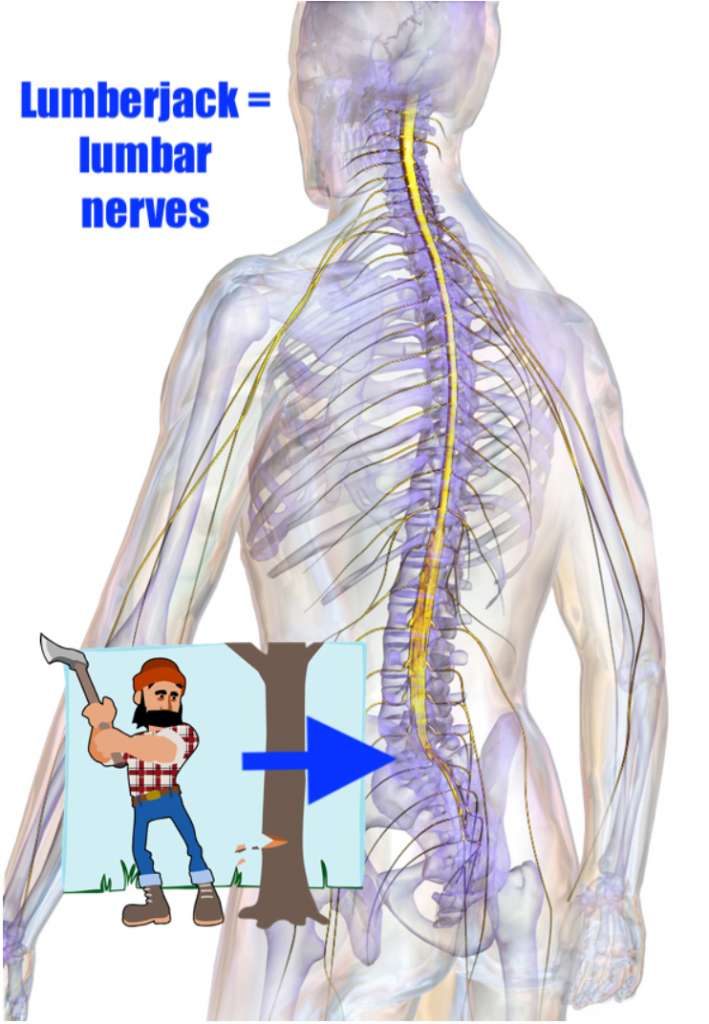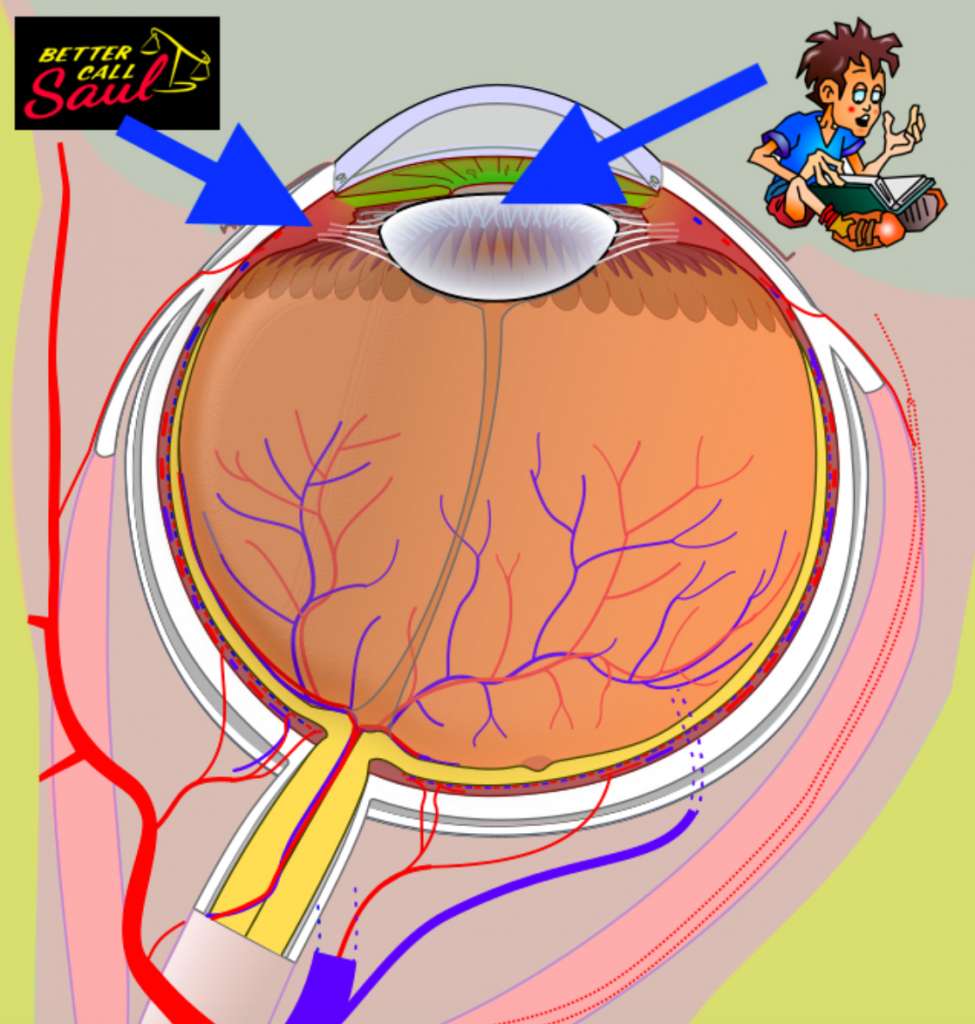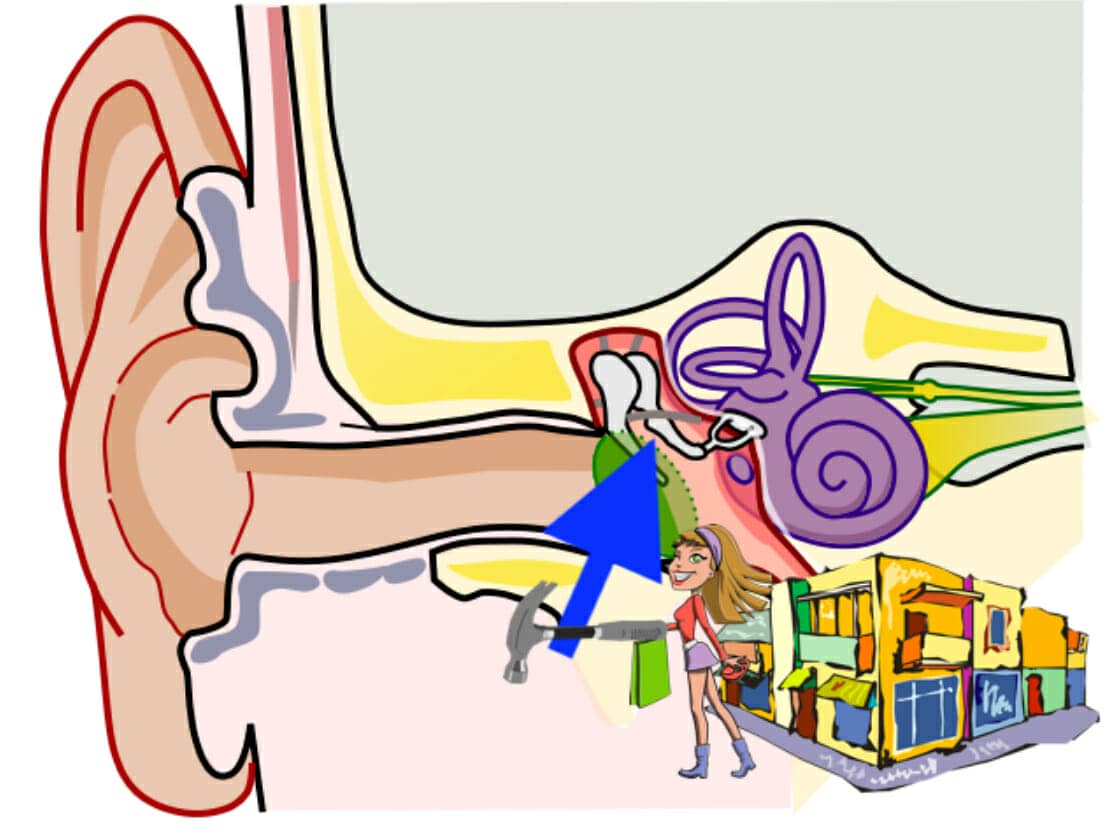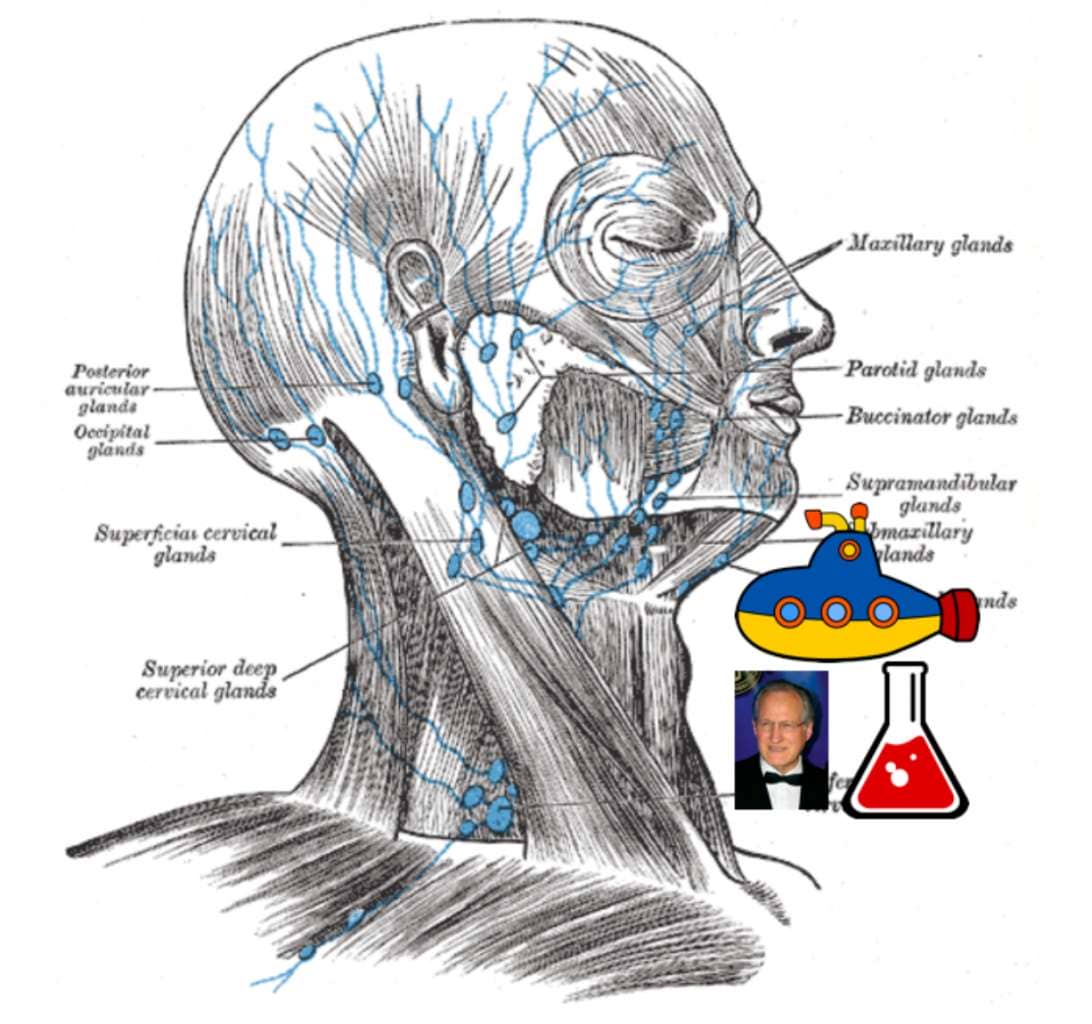
It’s because they give you generic, vague, and frankly boring acronyms.
Like:
“Botanists are Inferior Loggers” as a mnemonic for Buccal Auriculotemporal Inferior alveolar Lingual.
The reason medical mnemonics like acronyms are so weak doesn’t have to do with the acronym structure itself.
It’s the work involved in imagining concepts in order to remember complicated terminology that stinks. Unless you’re already a conceptual person with a strong connection to loggers, chances are “Botanists are Inferior Loggers” is going to fail you.
What should you do instead?
Consider using the “Magnetic Memory Method” I’m about to share with you in this list of anatomy mnemonics.
It takes about 5 minutes to understand the theory behind my approach. After that, you can modify each of these examples within seconds.
Or use them as you find them if you like.
Skeptical? Give Joe’s experience with this approach a listen before you decide whether or not to try this free tutorial:
So what do you say?
Ready to rapidly memorize as much anatomical terminology as you like?
Let’s dive in!
The Mega List of Anatomy Mnemonics
As you go through this list, the key mnemonic strategy to understand is this:
Your associations should be:
- Specific
- Ideally based on alphabetical and/or sound associations
- Use multisensory mnemonic images
- Use a spatial mnemonic device like the Memory Palace
- Use active recall for rapid entry into long-term memory
With these points in mind, let’s dive into some examples. You’ll see how the theory plays out as we go.
Then we’ll dive into further tips for getting the most out of your memory while learning anatomy using mnemonics and medical terminology.
One: Mnemonics for Anatomical Positions
One of the first things to learn are the body planes, such as:
- Horizontal plane
- Sagittal plane
- Midsagittal plane
- Anterior
- Lateral
- Abdominopelvic quadrants, etc.
Some terms like “horizontal plane” won’t be challenging at all.
But “sagittal”?
The Magnetic Memory Method teaches you to find an image that will help you on the basis of spelling and sound.
Personally, I immediately think of comedian Bob Saget with a satchel.
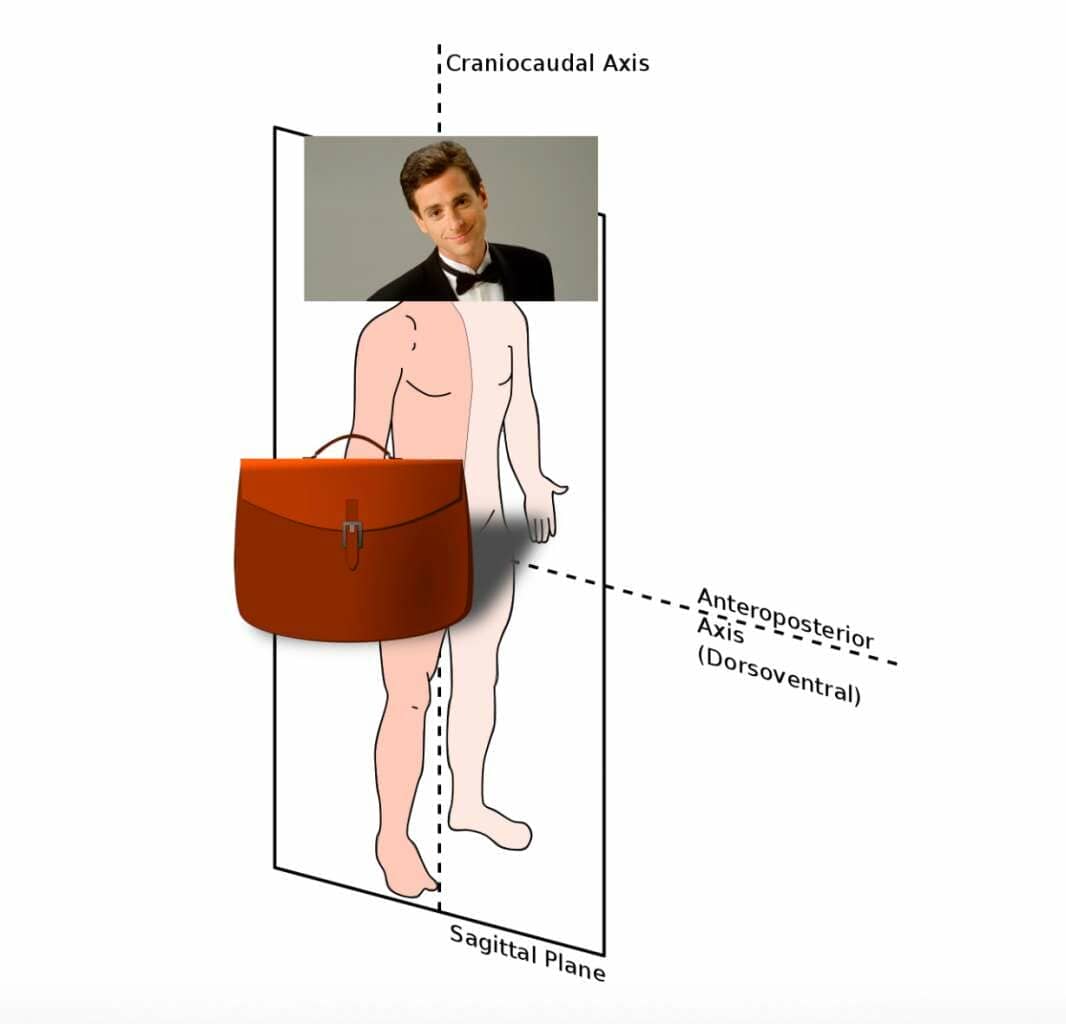
Why Bob Saget with a satchel? Because both the name and the object sound like “sagittal.”
You can even imagine Bob Saget’s satchel on his side with an arrow going along his body along the sagittal plane while he’s boarding an airplane.
Now, some people are immediately going to wonder…
What if I don’t know someone with a name that sounds like the anatomical term I want to memorize?
Don’t worry. If you complete the pegword method exercises, you’ll always have associations that will work.
Sure, there’s a bit of setup. But within an hour or less, you’ll be a memory master.
Two: Mnemonics for the Cranial Bones
There are 22 bones of the cranium and face. Rather than go through them all, let me give you an example of one of the tougher words.
That way you can see how the theory works out and adapt it for your own learning practice.
The zygomatic bone is a tough word.
At least until you use specific mnemonics. General Zod from Superman lore playing the xylophone on his own face helps bring back the opening sound of the term.
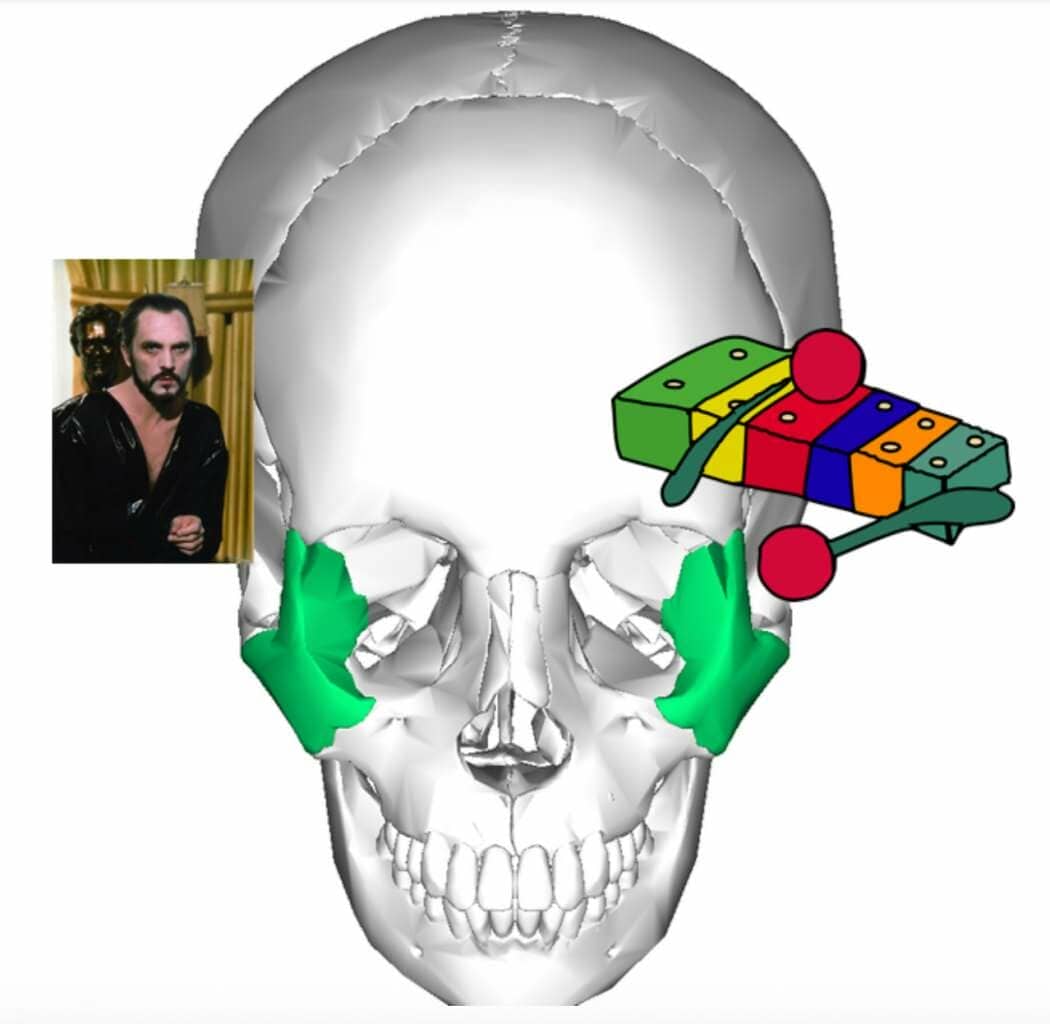
Because you’re placing the action of playing a xylophone on that region of this specific character’s face, you’re encoding sound and exact location at the same time.
Again, if you don’t know my association, anyone named Simon would also do. The important thing is to draw upon a figure you can imagine doing something.
The more dynamic the action, the more the anatomy mnemonics you use will help you rapidly learn the material.
You can then use the bodies of any celebrity, friend, teacher or anyone you know to help you memorize the entire skeletal system.
Three: Mnemonics For Muscles of the Body
It’s useful to know why muscles are named so you can group them together in Memory Palaces based on designation.
The naming conventions are:
- Direction of fibers
- Location
- Size
- Number
- Shape
- Origin and insertion
- Action or function
For example, abductor digiti minimi refers to the function of a muscle in your hand or foot that moves your little finger little or toe away from the other toes. Adductor digiti minimi means the opposite. It is a muscle that moves a digit towards the other fingers or toes.
To make these terms memorable, you can imagine someone like Adam Smith moving towards Donald Duck. For abductor muscles, you can imagine Abraham Lincoln moving away from the same duck.
Adam and Abraham help you remember the ab and ad prefixes. The duck helps you remember the “ductor” part.
Then, you simply place the association on the body part in question.
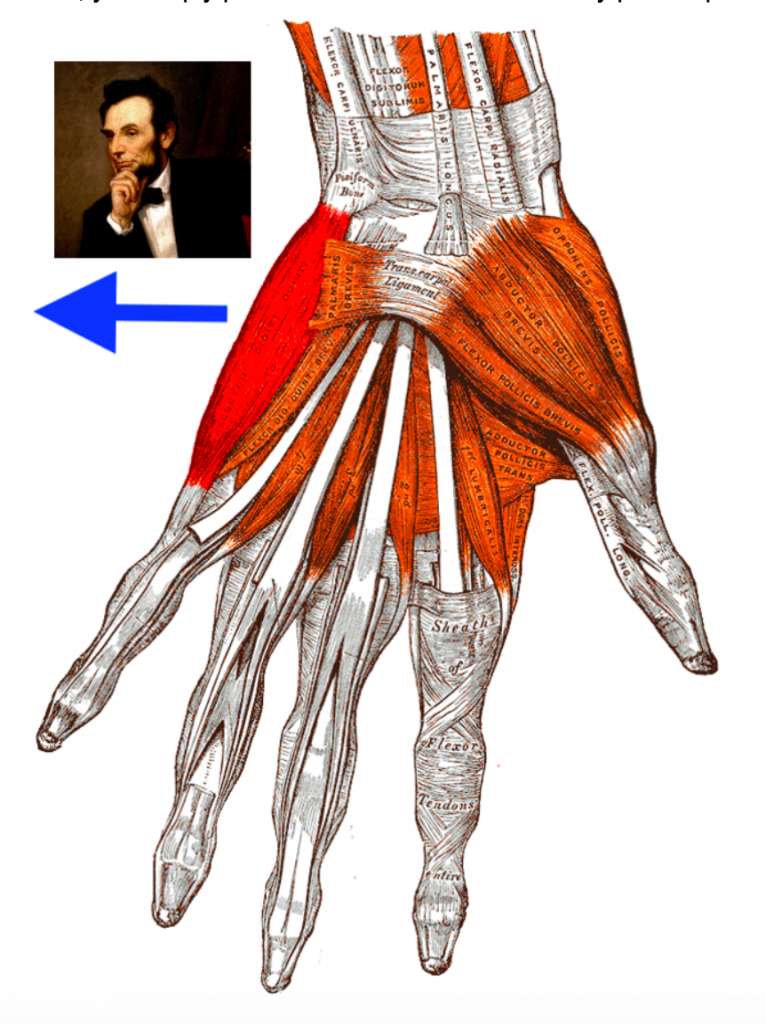
In this case, you can also look at your own hand and move the muscle while thinking about this anatomy mnemonic. It will help you remember it faster.
Apply this same approach to all of the muscles in the body.
Four: Mnemonics for the Integumentary System
The integumentary system involves a lot of information. That’s because it covers the:
- Epidermis
- Dermis
- Hypodermis
- Associated glands
- Hair
- Finger and toe nails
As you can tell by now, good mnemonics for anatomy comes down to specific images based on how the words are spelled. Then these associations are placed imaginatively on the location where they belong on the body. It’s the same thing for everything related to this system.
In this case, however, you may need to imagine that you have X-ray vision.
For example, to memorize the name and location of the dermal papilla, you’ll want to imagine it in the context of the stratum germinativum.
In this case, you may want to imagine a cutaway diagram on the wall of a Memory Palace.
To make this process quick and easy, imagine any wall in a room you’re familiar with.
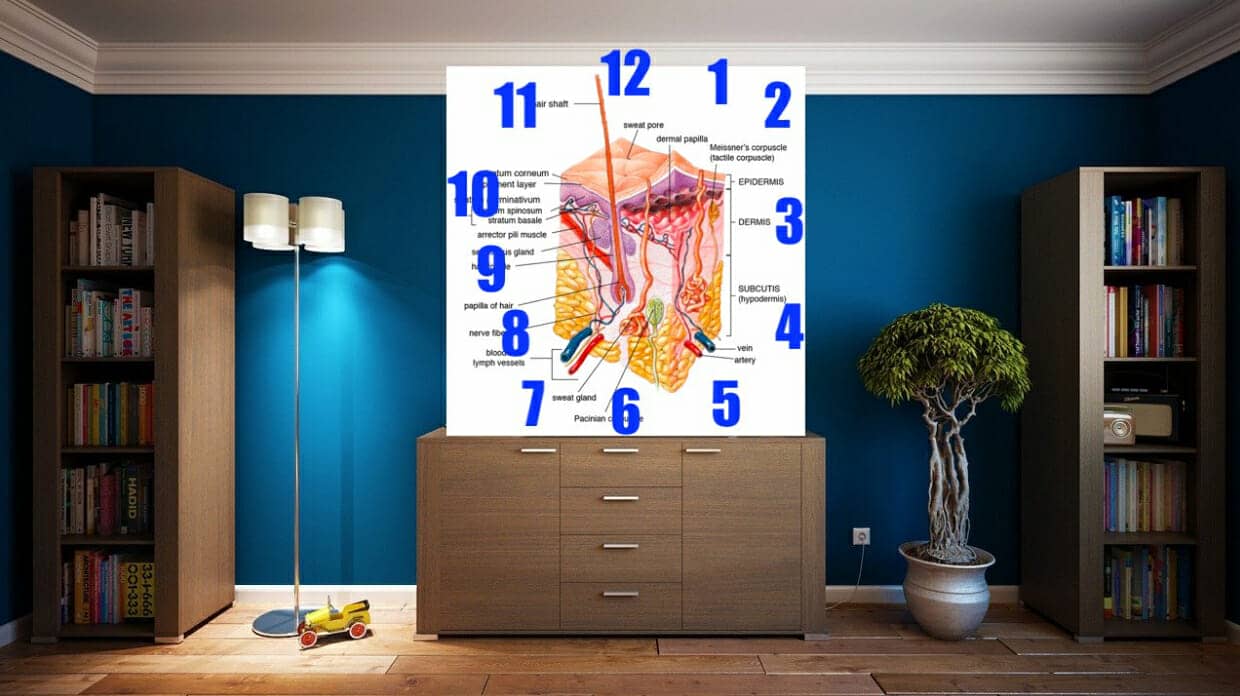
Next, start to “paint” the diagram on the wall and place a clock around it.
Then, using the Major System, you can create images that help you remember your mnemonics for each anatomical term.
For example, an image for the dermal papilla might be Demi Moore on a dirt bike shooting paprika and vanilla from its exhaust pipe. This image would be placed around the 3 o’clock mark.
Then, around the 10 o’clock mark, you might imagine a Fender Stratocastor guitar taking Tums for its acid reflux as part of your mnemonic for stratum germinativum.
As Bill pointed out in his comment on this memory techniques tutorial, we can use this clock mnemonic twice. Once with a 12-hour clock and another round with the 24-hr clock. Be warned, though. This is an intermediate, if not an advanced way to use mnemonics.
But if you want to learn it, it’s much better than acronyms for anatomy.
Five: Mnemonics for the Respiratory System
The respiratory system is not just about oxygen. It helps us eliminate oxidants from the body and regulates our acid base. And “respiration” is the name of the process for how the body moves gasses into and out of the blood.
Terms you’ll need mnemonics for include:
- Pharynx (try a pharaoh with a lynx)
- Larynx (do you know anyone named Larry you can use?)
- Trachea (a tray you imagine buying from Ikea)
- Bronchus (Charles Bronson on a chocolate bus)
Six: Mnemonics for the Central Nervous System
For this part of the body, you’ll need to cover terms like:
- Cerebellum (try your fave Netflix series actor ringing bells)
- Cerebrum (try your fave Netflix series actor using a broom)
- Thalamus
- Hypothalamus
- Midbrain
- Pons (try chess pawns)
- Medulla
For words with “thal” at the start, it can be tricky to find associations.
Break it down and use your imagination. For this kind of word, I almost always use Thor. That makes it much easier to mix him in an image with Weird Al Yankovich and Mickey Mouse for thalamus.
For more mnemonic examples related to the nervous system, check out my post on how to memorize the cranial nerves.
Seven: The Spinal Nerves
The nerves of the spine include:
- Cervical nerves (try a servant dressed as a vicar)
- Thoracic nerves (try Thor taking acid)
- Lumbar nerves (try a lumberjack)
- Sacral nerves (try Oliver Sacks crawling)
- Coccygeal nerves (try a rooster tugging on an eel)
For more related examples, please see my tutorial on memorizing the sacral and lumbar plexus.
As you may have noticed, in some of these mnemonic examples, I haven’t been very specific.
Sometimes, there’s just no getting around this with certain words. However, often I’m using a generic word like rooster to get at the “cock” sound in coccygeal.
But I’m actually thinking of a very specific rooster from the Warner Brothers cartoons: Foghorn Leghorn.
You might not know this specific reference. But with a bit of thought, you probably can remember a time you’ve seen a rooster that is personal enough to be much more memorable than using a vague reference.
Eight: Mnemonics for the Eye
There are many parts to the eye. Here are some suggestions for using mnemonics to memorize them.
Keep in mind that you can always use the Memory Palace technique to place an imaginary eye on any wall. You can even have multiple eyes on multiple walls to take more than one pass. That way you don’t have to compress all the terminology into just one part of the Memory Palace.
- Pupil (try yourself as a student)
- Ciliary body (try Saul Goodman keeping a diary)
- Conjunctiva (try a conman, like Saul Goodman, taking out the junk)
- Suspensory ligament (try Superman suspending his leotards)
- Cornea (try seeing yourself putting corn in your ear)
- Choroid (try hearing a chord while playing Asteroids)
Nine: Mnemonics for the Ear
The ear is made of three regions:
- Outer ear (or external ear)
- Middle ear
- Inner ear
A Memory Palace for each region is recommended.
Here are some suggestions for the different parts you’ll need to memorize:
- Pinna (Pinnochio playing piñata with a pineapple)
- Tympanic membrane (playing the timpani in a panic on the Titanic)
- Malleus (try shopping for hammers in a shopping mall with Princess Leia)
- Incus (imagine Indiana Jones cussing)
- Stapes (try Indiana Jones taping up his horse’s stirrup with ‘S’ tape)
Ten: Mnemonics for the Cardiovascular System
There’s much to cover with the cardiovascular system, and it’s all doable with specific and multisensory mnemonics that use proper visualization.
To give you some quick examples, check out the following:
- Atrium (Margaret Atwood taking a Barium swallow)
- Ventricle (Vin Diesel venting while riding a tricycle)
- Bicuspid (Beyonce cussing at a cupid)
Note: For the Atrium example, I suggested having the associative image engaged in a diagnostic procedure.
Use other knowledge you have of medical terminology as much as you can.
This will help you grow your knowledge much faster. You can also reuse images you’ve used before.
For example, if you used Kent Brockman from The Simpsons to help you memorize information about the brachial plexus, use that image again. The same core image can help you memorize the right brachiocephalic artery in a flash. You just need to alter it a little and place the association in its new location.
Eleven: Mnemonics for the Lymphatic System
Here we find lymphatic organs and lymph nodes.
- Tonsils (try someone you know named Tony setting up sails on a boat)
- Thoracic duct (reuse Thor doing acid, this time with a duck)
- Thymus (imagine your thigh getting massaged by Mickey Mouse)
- Spleen (David Lean in space, anyone?)
- Parotid lymph nodes (try a parrot waiting for the tide to come in)
- Submandibular lymph nodes (a submarine captained by Michael Mann with first dibs on a test tube you’re selling)
Twelve: Mnemonics for the Endocrine System
The endocrine system functions to produce and secrete hormones.
One cool thing you can do with some anatomical systems is interact your mnemonic imagery so that you better remember their locations.
For example, if you use Pinhead from the Hellraiser movies for the pineal gland, you can have him spitting something in the direction of the pituitary gland.
Spitting what? Pits, of course, but you could also have him spitting Brad Pitt, so the image is more dynamic and memorable.
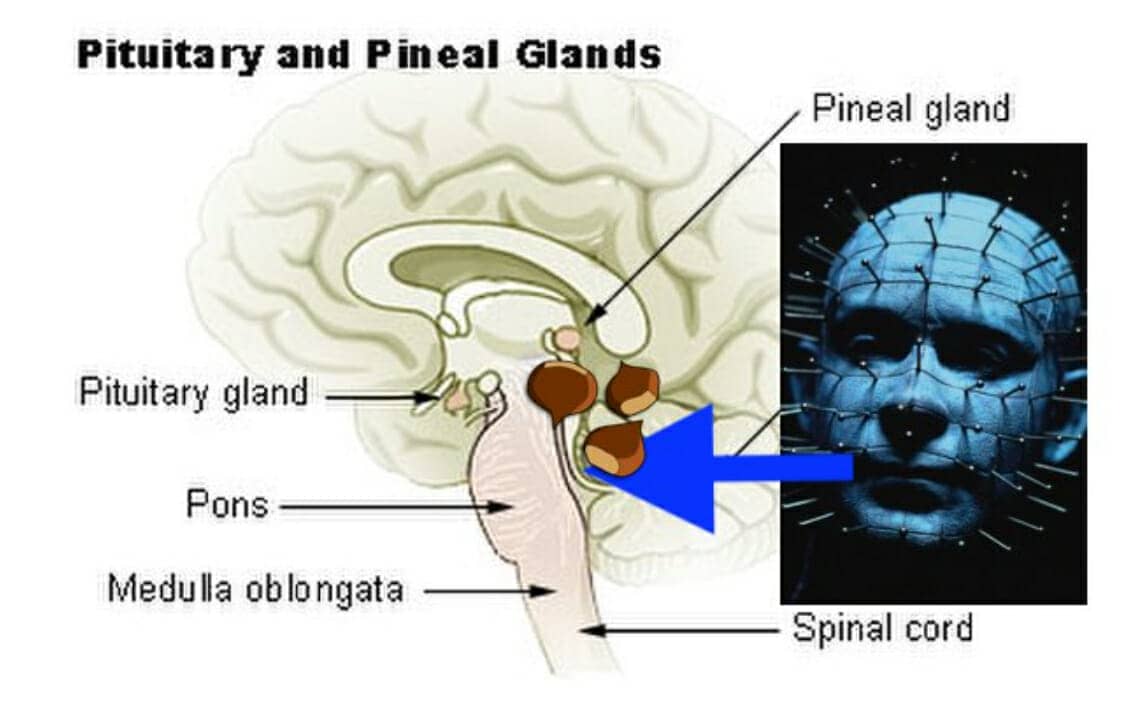
Although interactive images like this won’t always be immediately obvious, with practice, you’ll get faster at stringing them together.
In this case, you can have the pits (or Brad Pitt) bounce off the pituitary gland and land in a pond to help you remember the location of the Pons. There can be a lot of mud at the bottom of this pond, which will help you remember medulla oblongata.
Thirteen: Mnemonics for the Urinary System
The urinary system involves:
- Kidney (Nicole Kidman kneeing Tom Cruise)
- Ureter (Uri Geller calling E.T.)
- Urinary bladder (Uri Geller tapping a dictionary against his bladder)
- Urethra (Uri Geller throwing a rat at something)
For each of these, there may be other terms to learn.
As long as you’re using specific mnemonics, each should be easy to learn. Note that reusing a person multiple times works great so long as you place them in a different location and change the other images adequately to help you remember the different sounds.
Fourteen: Mnemonics for the Digestive System
The digestive system contains terms like:
- Duodenum (try Batman and Robin wearing denim, i.e. the (“dangerous duo”)
- Ileum (try Elaine from Seinfeld saying “uhm”)
- Cecum (try someone at Sea World doing sums)
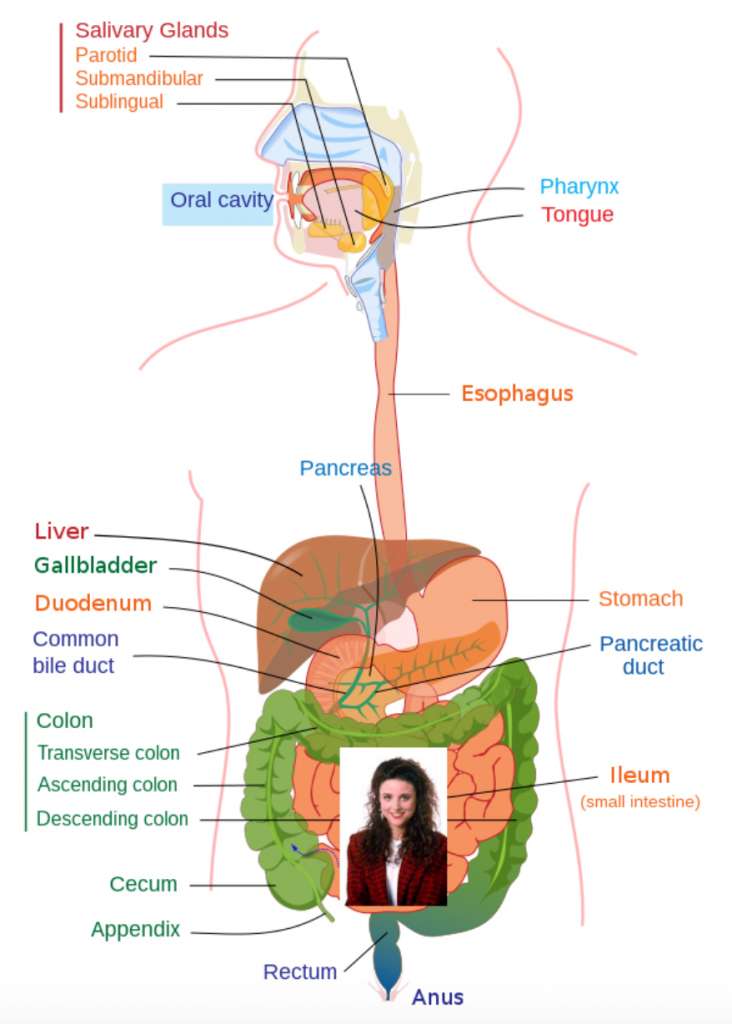
Fifteen: The Male Reproductive System
In this category, you’ll find challenging terms like:
- Seminal vesicle (try Superman with Eminem in a vehicle)
- Bulbourethral gland (try having a buck changing a lightbulb)
- Epididymis (think of someone with E as the first letter of their name as they “did” something epic with someone who is a “Misses”)
For terms like epididymis, it’s useful if you’ve already memorized a bunch of prefixes and suffixes.
Sixteen: The Female Reproductive System
Terms in this category include:
- Labium minor and major (try a Labrador dog)
- Cervix (try a servant serving a vixen)
- Uterus (try a umbrella helping the constellation taurus)
Tips for Using These Anatomy Mnemonics to Memorize Fast
As we’ve seen throughout, there are many little tips that make a huge difference when using medical mnemonics to memorize anatomy.
Here’s a summary of the most important with a few additional pointers:
- Use multiple Memory Palaces, including memory spaces
- Make sure your images are specific, concrete and multi-sensory
- Practice active recall
- Optimize Anki and flashcards to avoid rote learning
- If you don’t have enough celebrity associations at hand, go through “Visualization Mastery” in the Magnetic Memory Method Masterclass
Above all, realize that you’re not alone. Three-time World Memory Champion Alex Mullen has done incredibly well in medical school and his following career using mnemonics.
But instead of investing in a bankrupt industry of “mnemonic examples,” he learned to create his own.
And that’s what I’ve encouraged you to do on this page when it comes to mnemonics for anatomy and physiology.
If you need more help, register now for my FREE Memory Improvement Kit:
It will help you master the Memory Palace technique and develop tons of new mnemonics you can use to skyrocket your success as a medical professional.
So, what do you say?
Are you ready to significantly upgrade the acronyms for anatomy you’ve been using and make your memory “Magnetic” instead?
Related Posts
- Mnemonics, Language Learning And Virtual Memory Palaces In Discussion With Timothy Moser
Two memory skills enthusiasts reveal all.
- Memory Craft: Lynne Kelly On The Potent Power Of Ancient Mnemonics
Lynne Kelly joins the podcast to discuss her new book Memory Craft. We discuss the…
- On Math, The Science Of Mnemonics And Memory Modalities
Candid talk on the science of mnemonics with notes on math and rep systems.

